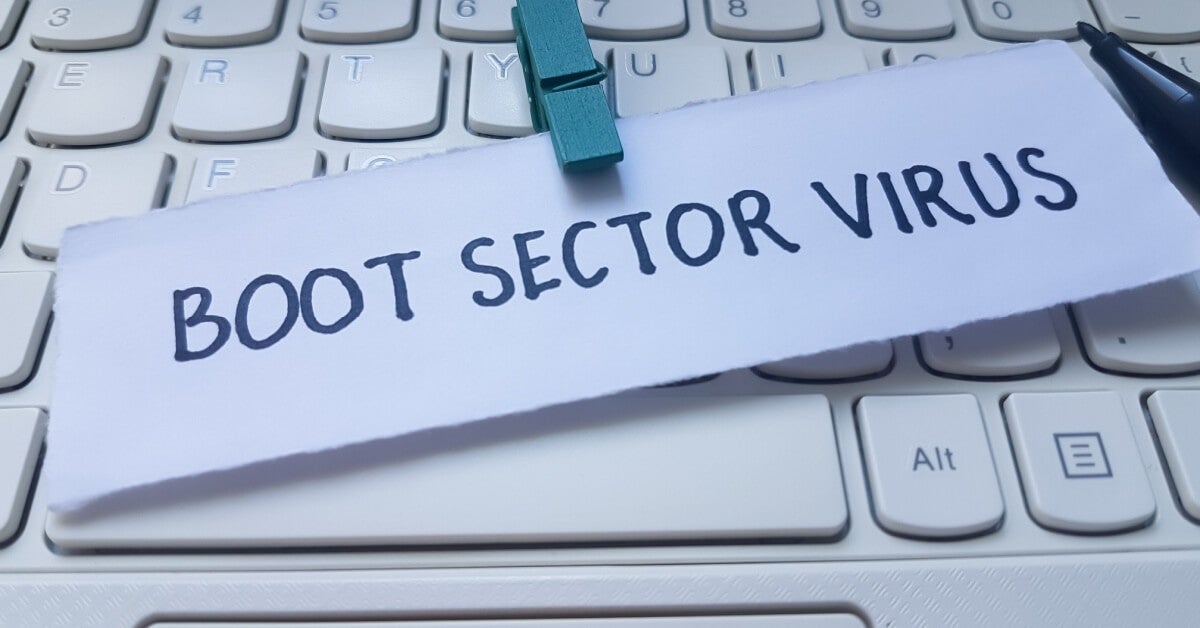A boot sector virus is a type of malicious software that targets the boot sector or partition table of a hard disk. By infecting this critical area, the virus ensures it runs every time the computer starts, making it a severe threat in computer security. Understanding what a boot sector virus is and how it operates is essential to protect your system from these insidious attacks.

Understanding Boot Sector Viruses
What is a Boot Sector in a Computer?
The boot sector is a specialized section on a storage device that contains code and data needed to start the boot process of a computer system. When you power on your computer, the BIOS or UEFI firmware reads the boot sector to load the operating system. It's the first step in bringing your computer to life.
How Do Boot Sector Viruses Infect Systems?
Boot sector viruses infect systems by replacing the legitimate boot sector code with malicious code. They often spread through:
- Infected Removable Media: Historically, floppy disks were common carriers. Today, USB drives and other removable media can carry a virus in the boot sector.
- Malicious Software Downloads: Downloading and running infected software can allow a boot sector virus to take hold.
- Email Attachments: Opening infected email attachments can introduce the virus.
Why Boot Sector Viruses are Dangerous
- Early Execution: Since they load before the operating system, they can bypass security measures.
- System Control: They have the potential to control the system at the most fundamental level.
- Difficulty of Removal: Standard antivirus programs may struggle to detect or remove them because they operate outside the operating system.
Historical Perspective of Boot Sector Viruses
Notable Boot Sector Viruses
- Michelangelo Virus: Programmed to activate on March 6th, it overwrote critical system data, rendering computers inoperable.
- Stoned Virus: One of the earliest boot sector viruses, it displayed the message "Your computer is now stoned" and spread via floppy disks.
Evolution Over Time
As technology evolved from floppy disks to modern storage devices, boot sector viruses adapted. While less common today, they have evolved into more complex threats like bootkits and rootkits, which can infect even modern systems.
Boot Sector Viruses in Modern Computing
The Current Threat Landscape
While traditional boot sector viruses are less prevalent, new variants have emerged that target modern systems. Attackers now focus on Unified Extensible Firmware Interface (UEFI) firmware, which can be exploited to create persistent and stealthy infections. These modern boot sector viruses in computer systems are more sophisticated and harder to detect.
UEFI and Secure Boot
Modern computers use UEFI with Secure Boot to verify the integrity of the boot process. Secure Boot helps prevent unauthorized code, like a boot sector virus, from executing during startup. However, sophisticated malware can sometimes bypass these protections, highlighting the need for continued vigilance.
Recognizing a Boot Sector Virus Infection
Common Signs of a Boot Sector Virus in a Computer
- Unexpected Boot Issues: Frequent crashes or the computer fails to boot.
- Strange Error Messages: Unexplained errors during startup.
- Performance Degradation: The system runs noticeably slower without an apparent reason.
- Unusual Disk Activity: The hard drive or other storage devices show unexpected behavior.
Diagnostic Tools
- Antivirus Software with Boot Sector Scanning: Use antivirus programs that specifically scan the boot sector for boot sector viruses.
- Bootable Antivirus Tools: Run scans from a bootable USB drive or CD to detect viruses outside the operating system environment.
- System Monitoring Tools: Monitor for unusual system activity that could indicate a virus in the boot sector.
Removing Boot Sector Viruses
Step-by-Step Removal Process
- Isolate the System: Disconnect from networks to prevent the spread of the virus.
- Use Bootable Antivirus Software: Boot from a clean USB drive or CD and run a full system scan to detect and remove the boot sector virus.
- Repair the Boot Sector: Use system tools like bootrec in Windows or fdisk in Linux to fix the Master Boot Record (MBR).
- Update All Software: Ensure all software, especially the operating system, is up to date to patch vulnerabilities.
- Reinstall the Operating System: If necessary, perform a clean installation to completely remove the infection.
Preventing Boot Sector Virus Infections
Best Practices
- Keep Systems Updated: Regularly install updates for your operating system and applications to protect against vulnerabilities that could be exploited by a boot sector virus.
- Enable Secure Boot: Use UEFI with Secure Boot to enhance protection against unauthorized boot code.
- Use Reliable Antivirus Software: Install reputable antivirus programs that offer boot sector protection and keep them updated.
- Practice Safe Browsing Habits: Avoid downloading software from untrusted sources and be cautious with email attachments, which can introduce a boot sector virus.
- Regular Backups: Maintain backups to recover your system in case of infection. This also minimizes data loss from other threats.
- Scan Removable Media: Always scan USB drives and other removable media before accessing their contents to prevent a boot sector virus in computer systems.
Conclusion
A boot sector virus poses a significant threat by targeting the foundational elements of your computer's startup process. While modern technologies like UEFI and Secure Boot have reduced the prevalence of traditional boot sector viruses, new and sophisticated threats continue to emerge. By understanding how a boot sector virus operates and adopting proactive security measures, you can safeguard your computer against these and other types of malware. Staying informed and vigilant is key to maintaining your system's security in the ever-evolving landscape of cyber threats.





